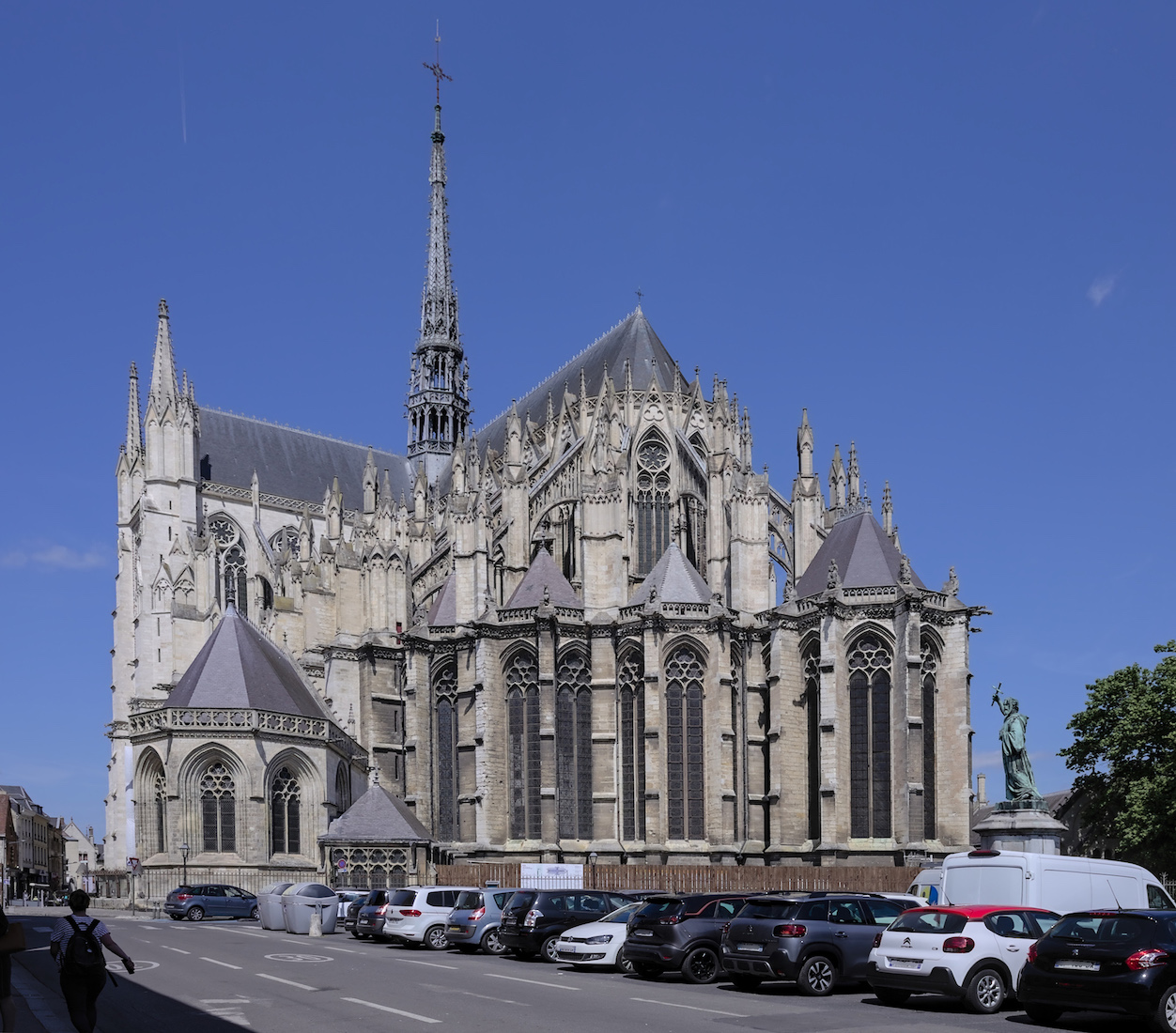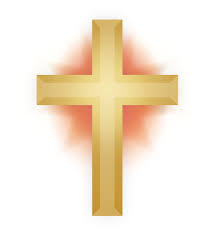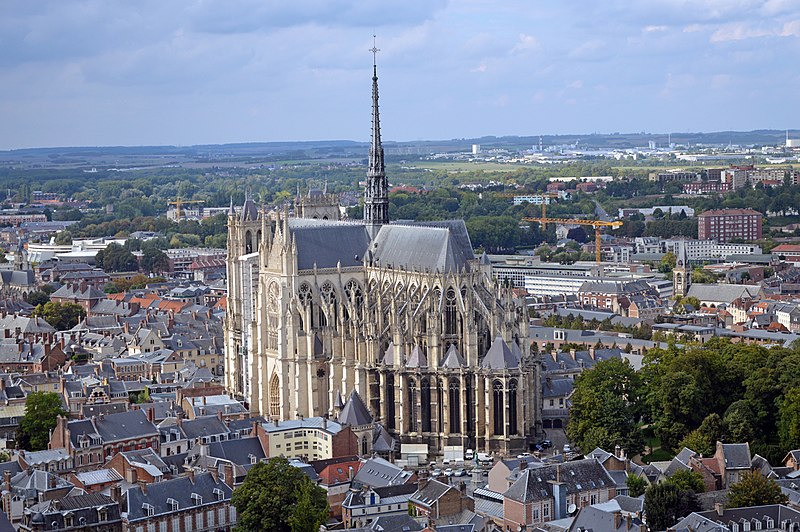
Many people have contributed to this site on Amiens Cathedral. The main photographic contributors are listed above, below the title. Use of their photographs has either been willingly given in response to my request, or they are photos listed under the Creative License scheme, CCL. Individual photos in the text are indicated by initials: Constanze Dornhoff [CD], ‘LeMonde1’ [LM]. Aidan McRae Thomson [AMT], Mike Werner [MW] and Steven Zucker [SZ]. Sources for these contributions can be found in the Conclusion. There are also a number of other photos, and accreditation for these is acknowledged in the text. I continue to be delighted at how ready people are to let me use their excellent photos, and express my thanks.
A brief history of this Cathedral is given below. However, if you wish to begin your tour of the Cathedral immediately, tap / click on START below. You can also access intermediate points in the tour by a tap / click on the following links:
C01 Chancel (Choir) and Sanctuary
The above interesting high view of Amiens Cathedral shows how it towers above all the nearby buildings. The view is from Perret Tower and shows the Southeast perspective of the Cathedral. We note the basic cruciform shape with the flèche tower at the crossing. At the near East end, the high central chancel/sanctuary is surrounded by apsidal chapels. This illustrates the chevet style, so commonly found in French cathedrals. [Photo Credit: Wikimedia BB 22385 CC-BY-SA 4.0]
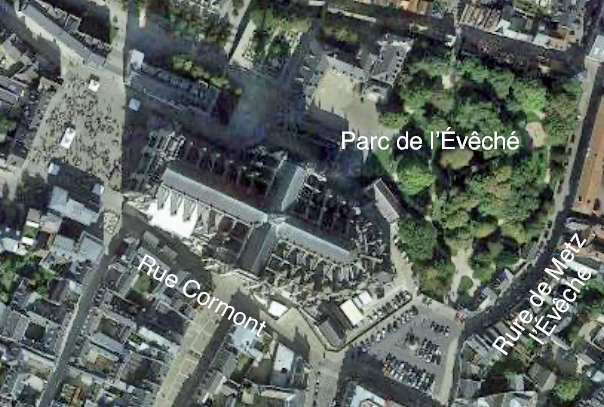
SATELLITE VIEW
This satellite view of the Cathedral shows that the axis of the Cathedral is at approximately a 25° angle from due East - West. In this site we shall use liturgical directions, assuming that the sanctuary is in exactly the Eastern (with a capital letter) direction. Other directions will be used accordingly. This convention allows the viewer to easily navigate around a cathedral without ever having been there.
Arriving by train, we emerge from the Amiens station and turn right along Boulevard de Belford. Two blocks along on the right we walk along the narrow Rue Gloriette, with enticing glimpses of the Cathedral ahead. Rue Gloriette runs into Rue de l’Oratoire, and then with a little kink into Rue Adéodat Lefevre. We then arrive at the Eastern carpark in the shadow of the Cathedral, where the road becomes Rue Cormont.
Some ticketed car parking is available at the East end of the Cathedral.
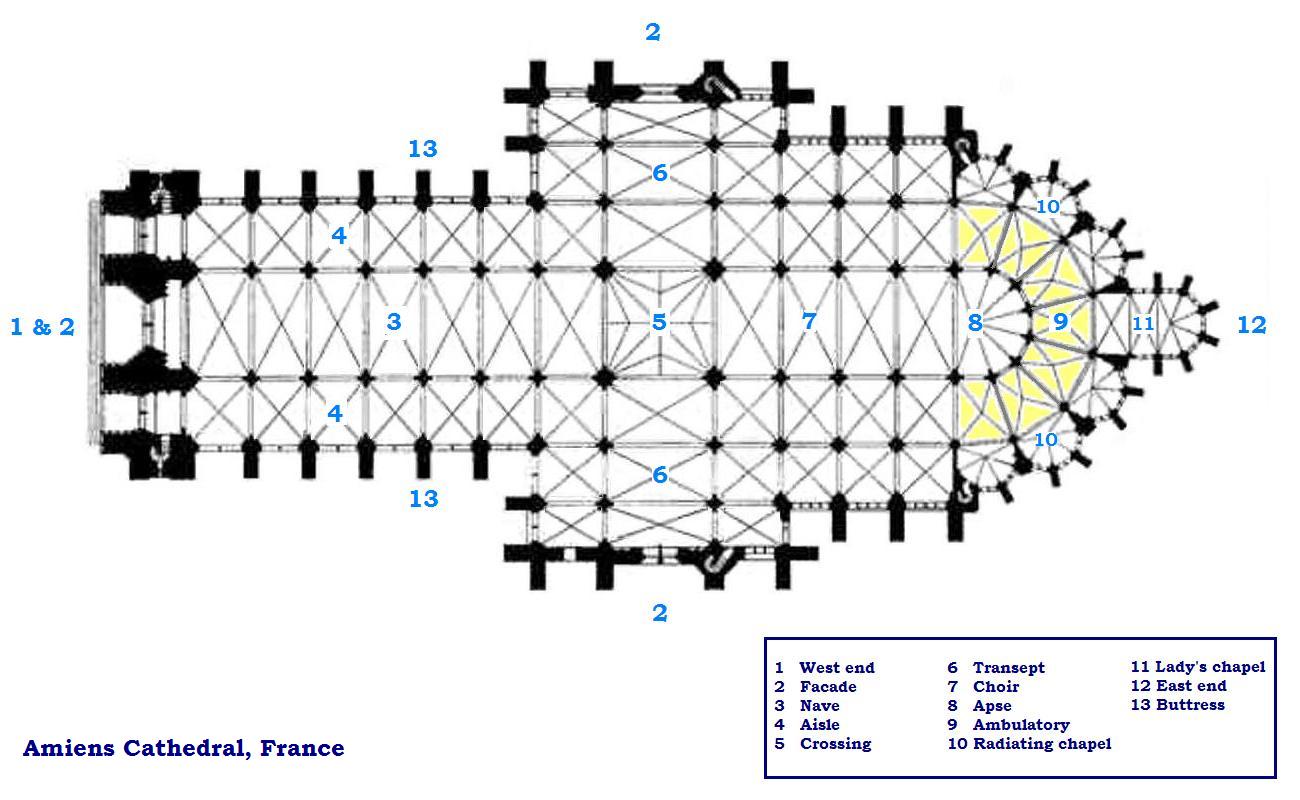
PLAN
In exploring Amiens Cathedral we shall walk right around the outside, beginning at the west end, and following around in an anticlockwise direction. We then enter by the West doors and explore the nave with its chapels along the sides. In fact the given plan is a little misleading in that these side chapels are not shown: they extend out between the buttresses. We next look at the transepts and crossing, before walking around the Eastern ambulatory with its apsidal chapels, again in an anticlockwise direction. Finally we investigate the chancel and sanctuary.
[Photo Credit: Author Unknown]
HISTORY
Wikipedia
Years Built: 1220 –1270
Address: 30 Place Notre Dame, Amiens 8000 France
(French: Basilique Cathédrale Notre-Dame d’Amiens), or simply Amiens Cathedral, is a Roman Catholic church. The Cathedral is the seat of the Bishop of Amiens. It is situated on a slight ridge overlooking the River Somme in Amiens, the administrative capital of the Picardy region of France, some 120 kilometres (75 miles) north of Paris.
The Cathedral was built almost entirely between 1220 and c. 1270, a remarkably short period of time for a Gothic cathedral, giving it an unusual unity of style. Amiens is a classic example of the High Gothic style of Gothic architecture. It also has some features of the later Rayonnant style in the enlarged high windows of the choir, added in the mid-1250s.
Its builders were trying to maximize the internal dimensions in order to reach for the heavens and bring in more light. As a result, Amiens cathedral is the largest in France, 200,000 cubic metres (260,000 cu yd), large enough to contain two cathedrals the size of Notre Dame of Paris.
The cathedral has been listed as a UNESCO World Heritage Site since 1981. Although it has lost much of its original stained glass, Amiens Cathedral is renowned for the quality and quantity of early 13th-century Gothic sculpture in the main west façade and the south transept portal, and a large quantity of polychrome sculpture from later periods inside the building.
The Wikipedia link below contains this and much more information:
https://en.wikipedia.org/wiki/Amiens_Cathedral
